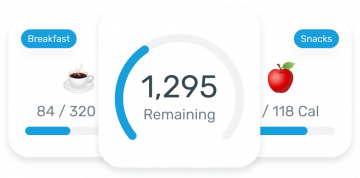
This method was used to create salt by ancient Chinese, Romans and Indians. Buddha instructed the world about salt storage and collection in the early fifth century BC. The Romans used ceramic containers called briquetage to collect the brine. Workers sifted the concentrated salt out of the water and washed it away. Then they poured the brine into shallow saucepans and set them onto clay pillars. The workers sold the powdered, dried sea salt to colonial New World residents. In the New World slaves from Africa were brought to rake salt on several islands in West Indies such as the Bahamas and Turks and Caicos Islands.
Many people know what table salt is, but not all people understand how sea salt works. While table salt is primarily made up of sodium chloride (the main ingredient), sea salt also includes magnesium, iron, calcium and potassium. These minerals are in small quantities in sea salt. They are also present in salt crystals. While it is best to use this mineral in moderation, adding a pinch to your dish will add extra nutrition and mineral nutrients.

Sea salt is the most widely used salt. It comes from warm areas and is harvested by filling manmade saltwater pools with water and waiting for it vaporize. The crystals will form when the water evaporates out of the man-made pool. These man-made pools are referred to as "salt works". The process of harvesting sea salt takes billions upon billions of a years. Different methods of harvesting the salt are used.
The entire process of producing sea salt is very complex. The first step involves the extraction of seawater. The seawater must be evaporated from the ocean. The water is allowed to remain in the water to dry and become concentrated. After that, the sea sal is ready to sell. The final product can be labeled either as refined or unrefined. The unrefined sea salt can be grey or contain marine bacteria or trace minerals that contribute to its complex flavor.
The process of getting sea salt is quite simple. The salt crystals form at the bottom of the water and are nearly dry. To remove impurities, you can pour off water and scrape off the salt's top layer. This is an excellent method to collect sea sal. It is extremely affordable and widely distributed. It is readily available in many countries. Salt can be used for human consumption after it is harvested. It is versatile in its use.

Extracting salt out of the sea is the exact same process as extracting salt out of river water. However, each salt is treated differently. Some sea salts may be extracted from the Earth, while others can only be harvested from the sea. In the latter case, the extraction of the salt is done using chemicals. To extract the iodine from the sea, the minerals are taken out of the sea. The salt is not only enriched with iodine but also has minerals removed to make it more digestible.
FAQ
How can I learn more about cooking?
You can find cooking classes all across the country. Many schools offer courses in baking, pastry, and wine tasting. You can learn more about how to cook by enrolling in a class at either a local vocational school or community college.
Where can I find free online cooking lessons?
Numerous websites offer free cooking lessons. YouTube can be searched for videos showing you how to make different meals. Some websites give you access to thousands of recipes. The sites typically charge a monthly fee but you can test them for free for a period of 30 days.
How Long Does It Take to Be a Chef? What is the average career path?
A chef's career takes about five years. In this period, you will learn basic cooking skills and experience as a kitchen assistant. After your training is complete, you will be eligible to apply for a job as a sous chef, executive chef, or line cook. A chef can earn between $25,000 and $60,000 annually.
Can you be a self-taught cook?
Yes, you can self-teach cooking! The joy of cooking is something that everybody enjoys doing, no matter their skill level. Start cooking at home if you want to learn how to cook. You can start small by making spaghetti sauce for dinner or pancakes for breakfast. You can learn the most by trying new recipes and making mistakes. You might even make some mistakes.
You can learn to cook in a matter of hours or weeks depending on your level of cooking ability. It's important that you remember that cooking does not mean following a recipe. There are many ways of cooking food. So if you have an idea for a recipe, use it.
What is the difference between a chef & a cook?
A chef prepares food to be served to others. A cook cooks for others. Although both jobs require you to prepare food, a chef is more involved in serving customers. This means that they may have to decide what dishes to prepare for their customers based on their preferences. A cook doesn't need to interact with clients. Instead, they ensure that the food tastes delicious before they serve it to others.
What should a beginning cook learn first?
Start cooking something simple, such as pasta, rice, soup. If you want to learn how to cook, go for a recipe book or YouTube video. Cooking can be fun when done with a partner. Cooking together is fun with family members or friends.
What equipment do I need to cook?
Cooking doesn't require special equipment. The right tools can make cooking much easier. A knife can be used instead of a fork when making pasta, or a whisk could be used to whip up stiff egg whites. Having the right tools can make cooking less daunting and allow you to get started faster.
Statistics
- under 10 Kids have been taught that there is special food just for them, and Fiese says that 10 percent of kids will throw a tantrum if they don't get the food they want. (washingtonpost.com)
- You'll be amazed that over 90% of CIA students receive scholarships and grants to finish their culinary studies. (ischoolconnect.com)
- In the United States, the category is estimated at $23.2 billion annually and is growing faster than the market. (washingtonpost.com)
External Links
How To
How to make a perfect Omelette
Omelets have always been a favourite food to eat for breakfast. How can you make them perfectly? I've tried many different methods and recipes, but none of them seem to work! So I am sharing some tips and tricks today to help you make fluffy, delicious omelets every morning.
We should first know that eggs are very temperamental ingredients when making omelets. Eggs must be purchased fresh, preferably organic, and kept chilled until ready for cooking. The yolks and whites will not form properly if they aren't kept cold enough. This will make your omelets appear strangely colored. It is best to use room-temperature eggs if you are going to cook them right away.
You can also separate the egg before you add it to the pan. Because this could cause your omelet to become curdled, you don't want any yolk to be mixed with any white.
The bottom part of an egg that is added directly to the stovetop might be burned, which could cause a ruined texture in your omelet. Instead, heat the egg in a microwave for 10 seconds and then place it in a pan. The microwave heat will cook the egg just right without making it too hot.
Let's now talk about mixing eggs. When you mix eggs together, you want to beat them well. To do this, take the bowl from the mixer and flip it upside-down. Next, shake the bowl vigorously. This allows the air to be whipped and the egg to be mixed thoroughly.
The fun part is now - adding the milk to the mixture. Fold the eggs in the milk mixture by first pouring half of it into the egg whites. Do not worry if you see streaks of egg; they will disappear when the omelet is flipped.
After you have done folding the eggs, heat the pan on medium heat. The oil will start to smoke. Once the oil has gotten hot, add 1/4 cup of butter and swirl it around so that the entire pan is coated. Carefully open the pan's lid and add salt to the pan. An additional pinch of salt will prevent the omelet form sticking to your pan.
Cover the pan once you have formed the omelet. Wait for the top to set. Flip the omelet with a spatula, or flip it upside down. Cook the opposite side for another minute. Serve the omelet immediately by removing it from the pan.
This recipe works best using whole milk. Skimmed milk is also possible.